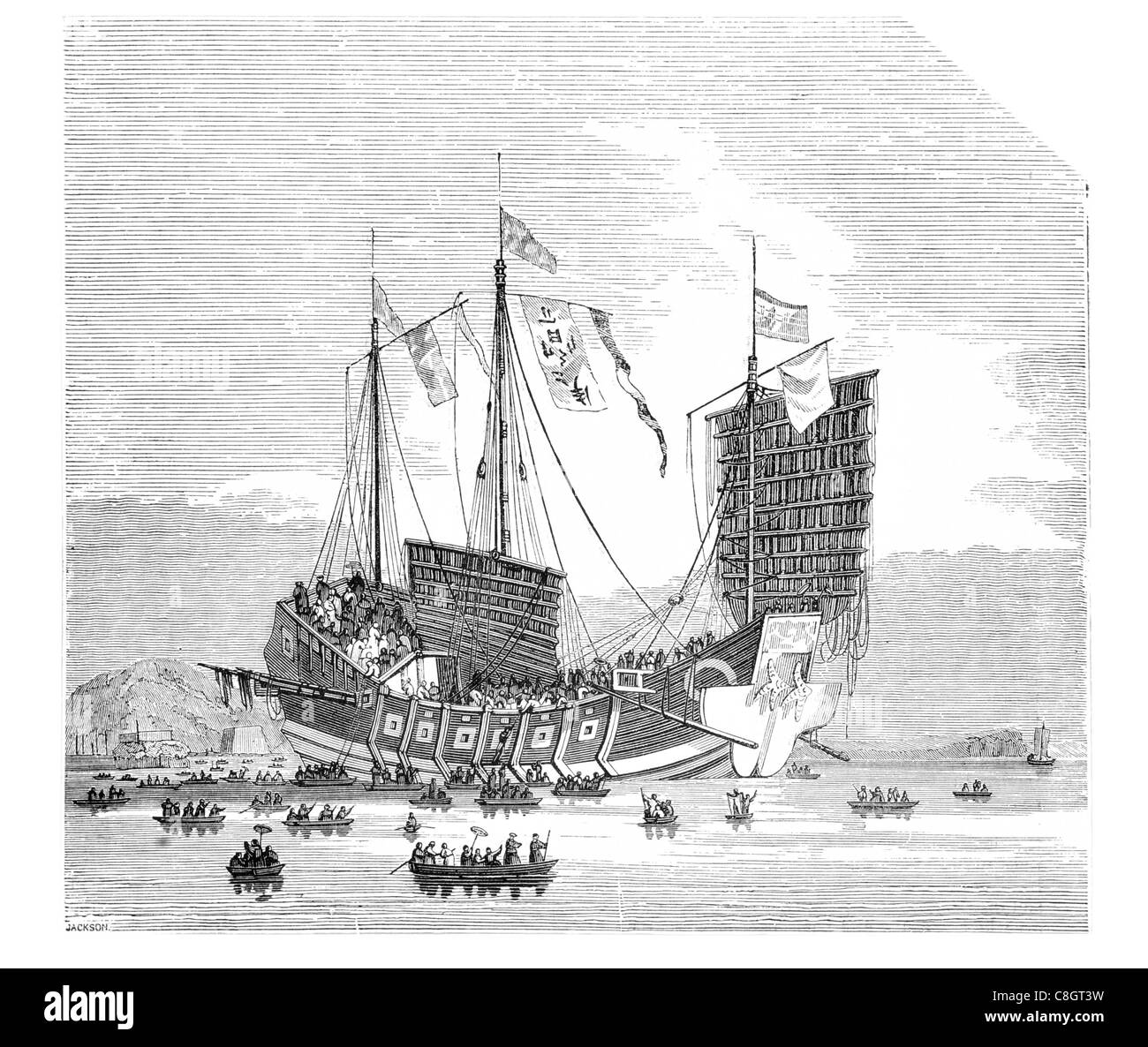Chinese trading junk ancient Chinese sailing vessel Junks Han Dynasty Asia ocean voyage Hong Kong junk-rigged sailboat

Image details
Contributor:
SOTK2011 / Alamy Stock PhotoImage ID:
C8GT3WFile size:
30.3 MB (1.8 MB Compressed download)Releases:
Model - no | Property - noDo I need a release?Dimensions:
3543 x 2990 px | 30 x 25.3 cm | 11.8 x 10 inches | 300dpiDate taken:
2011More information:
A junk is an ancient Chinese sailing vessel design still in use today. Junks were developed during the Han Dynasty (206 BC–220 AD) and were used as sea-going vessels as early as the 2nd century AD. They evolved in the later dynasties, and were used throughout Asia for extensive ocean voyages. They were found, and in lesser numbers are still found, throughout South-East Asia and India, but primarily in China, perhaps most famously in Hong Kong. Found more broadly today is a growing number of modern recreational junk-rigged sailboats. Junks were efficient and sturdy ships that sailed long distances as early as the 2nd century AD. They incorporated numerous technical advances in sail plan and hull designs that were later adopted in Western shipbuilding. The historian H. Warington Smyth considered the junk one of the most efficient ship designs, stating that "As an engine for carrying man and his commerce upon the high and stormy seas as well as on the vast inland waterways, it is doubtful if any class of vessel… is more suited or better adapted to its purpose than the Chinese or Indian junk, and it is certain that for flatness of sail and handiness, the Chinese rig is unsurpassed." Classic junks were built of softwoods (although of teak in Guangdong) with multiple compartments accessed by separate hatches and ladders, reminiscent of the interior structure of bamboo. Traditionally, the hull has a horseshoe-shaped stern supporting a high poop deck. The bottom is flat with no keel (similar to a sampan), so that the boat relies on a daggerboard, leeboard or very large rudder to prevent the boat from slipping sideways in the water. The largest junks, the treasure ships commanded by Zheng He, were built for world exploration in the 15th century, and according to some interpretations may have been over 120 metres (390 ft) in length.